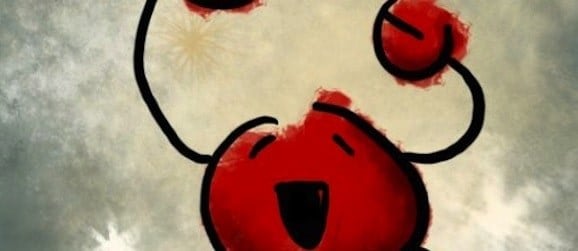Full Sail Stories
Published May 08, 2012
Student Game Project on Exhibit at Smithsonian
A student game project about a crab who dreams of leaving his underwater trash heap to make his way to the surface is on display at the Smithsonian in Washington, D.C.

A student game project about a crab who dreams of leaving his underwater trash heap to make his way to the surface is on display at the Smithsonian in Washington, D.C.
Scurvy, the Seaweed Slinger is part of MathAlive, an exhibit that demonstrates to kids how design, engineering and technology relate to math.
“The exhibit, sponsored by Raytheon, aims to show kids practical and fun applications of math in the real world, from skateboarding to architecture to video games,” said Jon Ross, who was the technical lead on the game. “It’s at the Smithsonian now through June 3, and will then be touring around the country and possibly even to some international locations. It’s already set to go to Phoenix, then Alabama later this year.”
Scurvy Makes its Way to the Smithsonian
Ross said he and teammate Holly Dorazio, the game’s lead artist, were approached about the MathAlive exhibit after graduation. A company called Evergreen Exhibitions had contacted Full Sail University seeking kid-friendly video games.
“They then got in touch with Holly and me, and we were, of course, thrilled with the prospect of our creation being in a museum,” said Ross.
“I was the technical lead for the game, which meant I did a lot of the heavier ‘math’ programming, specifically collision and physics,” said Ross. “I did a Skype interview with Evergreen Exhibitions, where I elaborated on how exactly math is used in video games.”
Scurvy’s Origins
Scurvy, the Seaweed Slinger was created in five months as part of a student game project, the capstone project for students in Game Development, Game Design and Game Art. It was a collaboration between 11 students from the three programs – seven programmers, two artists and two producers.
“Scurvy was a great project here at Full Sail,” said Liam Hislop, department chair/producer for Game Project. “The three main reasons were that the team, from all three degree programs, shared a singular vision for the game, they kept the mechanics simple for the game, and they listened to feedback from their instructors.”

Scurvy’s World
In their final presentation, the team describes the game as a 2D sketchbook that comes to life in a 3D-style scrolling video game world.
The player becomes Scurvy, a crab bound by his existence in an underwater trash heap world. Scurvy’s dream is to explore the surface of the sea, but he has to overcome many obstacles and learn new skills. He must disable enemies, such as the toxic creatures that inhabit his trash heap environment. Using his claws, he must grapple and swing his way to the surface. Along the way, Scurvy collects useful items and consults with clams, which act as guides, providing wisdom on how to use his abilities.
Ross said Scurvy is not a purely educational game, although the game’s underwater trash heap is based on a real one located in the Pacific Ocean. “So, we do hope that the game raises environmental awareness,” said Ross.
Ross said the team is planning a reunion in Washington D.C. on May 5 to see the exhibit. In particular, Ross said he was looking forward to seeing kids’ reactions to the game.
“One thing I know, thanks to the brilliant creativity our team and the amazing work of Holly Dorazio, we were able to create a very lovable, memorable character, Scurvy,” said Ross. “Everyone who has played the game seems to fall in love almost instantly. Thanks also goes to Scurvy’s talented voice actor, Jonathan Rebar, also a developer for the game.”
Added Hislop: “The team was made up of amazing people, and I am so proud of what they have done with Scurvy after graduating, proving that it wasn’t simply a project, but a labor of love. That is where great games all come from, and I couldn’t be more proud for them to have the game shown at the Smithsonian.”


